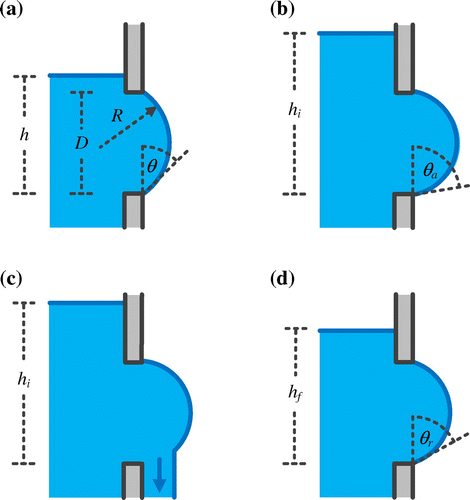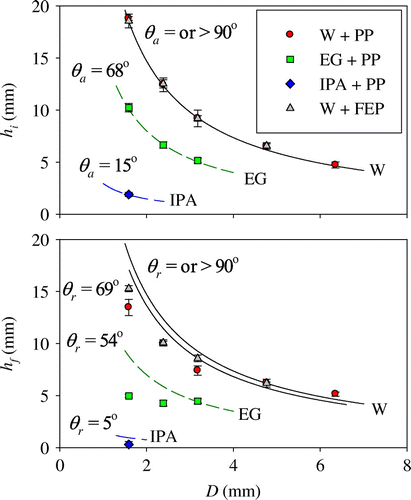Figures & data
Figure 1. A side, cross-sectional depiction of a fluid handling component with a small circular hole of diameter (D) in one of its vertical walls. (a) Liquid with a surface tension and density of γ and ρ rises vertically past the hole to a height of h without flowing through it. (b) The liquid reaches a critical height of hi, where θ ≥ θa and (c) flow through the hole begins. (d) As the hole drains, the height of the liquid eventually falls to a critical height of hf where θ ≤ θr and flow ceases.

Table 1. Properties of the liquids.
Table 2. Advancing and receding contact angles (θa and θr) of the various liquids on the solids.
Figure 2. Plots of the critical liquid heights to initiate and terminate flow (hi and hf) through a small circular hole of diameter D. The points are experimental data. The error bars represent standard deviation in the measurements. The curves are theoretical estimates from Equations (Equation6(6) )–(Equation9
(9) ). The black, solid curves are for water (W), the green, short-dash curves are for ethylene glycol (EG) and the blue, long-dash curves are for isopropyl alcohol (IPA).

